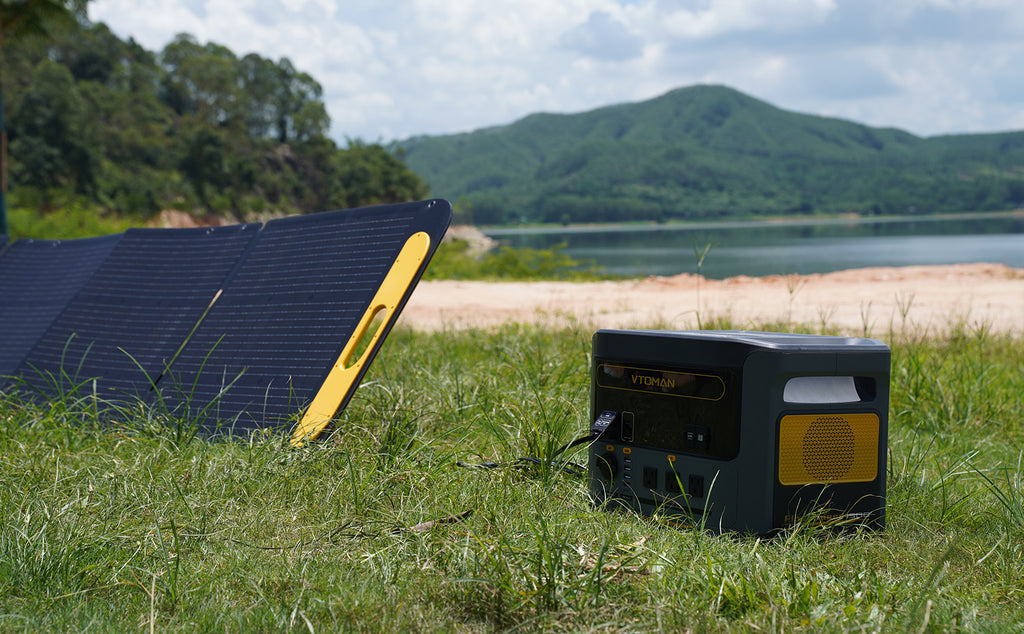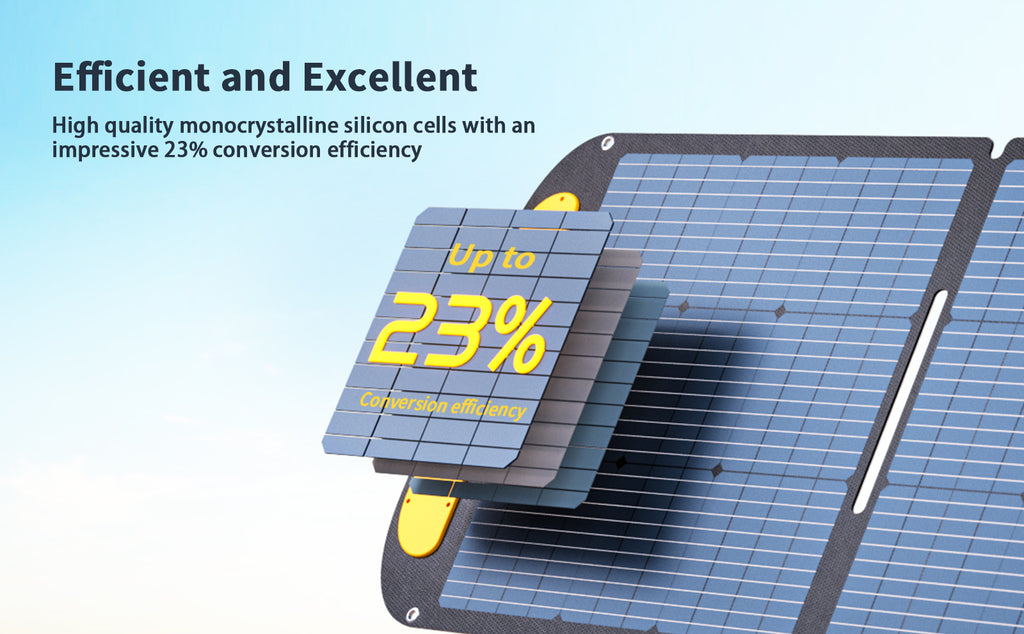Harnessing the power of the sun to charge batteries represents a fusion of ancient sunlight and modern technology. This process not only epitomizes sustainability but also offers a practical solution for powering devices, vehicles, and homes in an eco-friendly manner. The core of this system lies in solar panels, devices capable of converting sunlight into electricity. This article delves into the nuances of charging batteries with solar panels, providing a comprehensive guide that balances professional insight with accessibility.
System Components for Solar Panels to Charge a Battery
- Solar Panels: The primary source of power, converting sunlight into DC electricity.
- Batteries: These storage units hold the electrical energy for later use, making solar power available even when the sun isn't shining.
- Charge Controller: This device ensures the battery is charged correctly, regulating the flow of electricity and protecting the battery from damage.
- Wiring: Electrical wiring connects all components, facilitating the flow of electricity from the solar panels to the battery through the charge controller.
- Inverter (Optional): If the stored DC power needs to be converted into alternating current (AC) for household or other AC devices, an inverter is included in the setup.
How to Charge a Battery from Solar Panels
-
Sunlight Absorption: Solar panels, composed of numerous photovoltaic cells, start the process by absorbing sunlight. Each cell within the panel is designed to capture solar radiation and convert it into electrical energy.
-
Direct Current (DC) Generation: The absorbed sunlight excites electrons in the photovoltaic cells, creating direct current (DC) electricity. This electricity is the initial form of the energy generated by solar panels.
-
Flow Regulation via Charge Controller: The DC electricity is then routed through a charge controller before it reaches the battery. The charge controller plays a critical role in this process:
- It regulates the voltage and current being delivered to the battery, ensuring that it matches the battery's specifications to prevent overcharging or undercharging.
- It monitors the battery's charge status to optimize the charging process and protect battery health.
- Battery Charging: The regulated DC electricity from the charge controller is directed into the battery, initiating the charging process. Throughout this stage, the charge controller continuously adjusts the electrical input to maintain safe charging conditions and maximize the battery's lifespan.

Can I Charge a Battery From a Solar Panel Without a Charge Controller?
Technically, it is possible to charge a battery directly from a solar panel without a charge controller. However, this approach is fraught with risks, including overcharging and potentially damaging the battery. A charge controller acts as a mediator, preventing overcharge, deep discharge, and overvoltage, which can harm both the battery and the solar panel. Therefore, while one might bypass a charge controller for small, low-power applications, it is strongly advised to use one for any substantial charging endeavor.
How Big of a Solar Panel Do I Need to Charge a Car Battery?
As a rule of thumb, a 100-watt solar panel can effectively maintain and slowly charge a car battery under full sun conditions. For more significant charging needs or less optimal sunlight conditions, larger panels or multiple 100-watt panels may be necessary. Calculating the exact size involves understanding the battery's needs and the panel's output under specific conditions.
How Long Will a 400 Watt Solar Panel Take to Charge a 12V battery?
Assuming optimal sunlight conditions, a 400-watt panel can produce approximately 33 amperes of current per day (assuming 8 hours of sunlight). Thus, a 100Ah battery could be charged from empty to full in roughly three days under ideal conditions. It's essential to note that real-world conditions often vary, and efficiency can be affected by factors like shading, panel orientation, and battery age.
What Batteries Can I Use With Solar Panels?
Solar panels are versatile in their compatibility with various battery types, including lead-acid, lithium-ion, and nickel-cadmium batteries. Each type has its own set of advantages and requirements.
| Battery Type | Cost-Effectiveness | Maintenance | Lifespan | Application Suitability | Energy Density | Longevity | Durability | Performance | Environmental Concerns |
|---|---|---|---|---|---|---|---|---|---|
| Lead-Acid Batteries | Among the most economically priced options | Requires regular checks, e.g., water level monitoring in flooded types | 3 to 5 years with proper maintenance | Ideal for stationary setups like home solar systems | Lower compared to lithium-ion and nickel-cadmium | Shorter compared to lithium-ion | Less durable compared to nickel-cadmium | Good for large power applications | Lead is toxic, recycling is essential |
| Lithium-Ion Batteries | Higher upfront cost but cost-effective over time | Virtually maintenance-free | Often exceeding 10 years | Perfect for both portable and stationary applications (e.g., EVs, portable power stations) | Higher, stores more power in a smaller footprint | Longer, minimal degradation in performance | More durable than lead-acid | Excellent, especially in high drain applications | Battery components are less toxic but require proper disposal |
| Nickel-Cadmium Batteries | Moderate compared to lithium-ion and lead-acid | Requires periodic maintenance to prevent memory effect | 10 to 20 years with proper maintenance | Suitable for extreme temperatures and rugged durability applications | Moderate, less than lithium-ion but more than lead-acid | Comparable to lithium-ion | More durable than lead-acid | Excellent, particularly in cold temperatures | High environmental impact due to cadmium |
What Solar Panels Can I Use to Charge A Battery?
The market offers a wide range of solar panels suitable for charging batteries, from monocrystalline to polycrystalline and thin-film panels.
-
Monocrystalline solar panels stand out for their high efficiency and longevity, making them the premier choice for settings where space is at a premium. These panels are crafted from a single, pure silicon crystal, which accounts for their superior performance and durability. However, the process of creating monocrystalline silicon is intricate and costly, leading to higher prices for these panels. Their sleek, dark appearance not only adds an aesthetic advantage but also reflects their refined efficiency, ideal for residential rooftops or commercial settings where maximizing output from a limited area is crucial.
-
Polycrystalline solar panels, in contrast, are slightly less efficient but offer a more cost-effective solution. Derived from multiple silicon crystals melted together, these panels are easier and cheaper to produce, which lowers their market price. Despite their marginally reduced efficiency, polycrystalline panels provide a reliable energy solution, especially for installations where space is less constrained. Their characteristic blue, speckled appearance distinguishes them from their monocrystalline counterparts.
-
Thin-film solar panels introduce a different set of advantages, chiefly their flexibility and lighter weight. These panels are made by depositing one or more thin layers of photovoltaic material onto a substrate. This manufacturing approach makes thin-film panels adaptable to various surfaces, including curved ones, and reduces their weight, making them suitable for applications where traditional panels might be impractical. However, this convenience comes at the cost of efficiency; thin-film panels generally require more space to generate the same amount of power as crystalline panels. Yet, for projects where lightweight and flexible panels are paramount, such as on RVs, boats, or temporary installations, thin-film panels offer an invaluable solution.

Final Words
The practice of charging batteries with solar panels not only aligns with sustainable energy goals but also provides autonomy in energy use. Whether for small gadgets, vehicles, or entire homes, the process demands a thoughtful approach to system design and component selection. By understanding the intricacies of solar panels, batteries, and charge controllers, one can harness the sun's power effectively and responsibly. As technology advances, the efficiency and accessibility of solar charging continue to improve, promising an increasingly vital role in our energy future.
Q&As about Charge a Battery With Solar Panels
Q: How efficient are solar panels at charging batteries?
A: The efficiency of solar panels in charging batteries depends on several factors including the type of solar panel, the capacity of the battery, and environmental conditions. Monocrystalline panels, with efficiencies up to 22%, are among the most efficient for charging batteries. However, actual charging efficiency is also influenced by sunlight availability, panel orientation, and shadowing.
Q: How do I calculate the size of the solar panel system needed to charge my battery bank?
A: To calculate the size of the solar panel system, you need to consider the total daily energy consumption (in watt-hours), the average sunlight hours your location receives, and the efficiency of the solar panels. A simplified formula is:
Total Watts of Solar Panels=(Total Daily Energy Consumption/Average Sunlight Hours)×Safety Factor
Note that the safety factor, often between 1.25 and 1.5, accounts for potential inefficiencies and variations in sunlight.
Q: What is the impact of temperature on solar panel charging efficiency?
A: Solar panel efficiency typically decreases as temperature increases. Most solar panels are tested at 25°C (77°F), and performance can drop in hotter climates. For example, a solar panel might lose 0.5% of its efficiency for every degree Celsius above 25°C. This is crucial for accurately sizing a system in very hot environments.
Q: How long does it take to fully charge a battery with a solar panel?
A: The time to charge a battery from solar panels depends on the battery's capacity (in ampere-hours, Ah), the power output of the solar panel (in watts), and the sunlight conditions. For instance, a 100Ah battery requires about 1,200 watt-hours to charge fully. A 300-watt solar panel under ideal conditions (about 4 hours of full sun) can potentially charge the battery in one day. However, actual charging times will vary based on real-world conditions.
Q: Are there any maintenance requirements for a solar-powered battery charging system?
A: Maintenance requirements vary by system components. Solar panels generally require minimal maintenance, mainly periodic cleaning to remove dust and debris. Batteries, depending on their type, may require more specific maintenance. Lead-acid batteries need regular checks for water levels and terminal cleaning, while lithium-ion and nickel-cadmium batteries require much less maintenance. Charge controllers and inverters should be checked for proper operation and firmware updates.
Q: How does weather affect solar battery charging?
A: Solar battery charging is directly affected by weather conditions. Cloudy or rainy days significantly reduce the amount of sunlight reaching the panels, decreasing their output and extending charging times. Some solar panels are designed to perform better in low-light conditions, but overall efficiency will still be lower than on sunny days. Planning a system should include considerations for the local weather patterns to ensure adequate power generation year-round.
Read More
- Urgent Response to Unauthorized Company Impersonation – VTOMAN
- VTOMAN FlashSpeed 1500: Perfect Black Friday Gift for Families
- Convert mAh to Wh: A Beginner's Guide – VTOMAN
- The Versatile Applications of Portable Power Stations – VTOMAN
- Top 9 New Year's Resolutions for 2024: Live More Sustainably – VTOMAN












